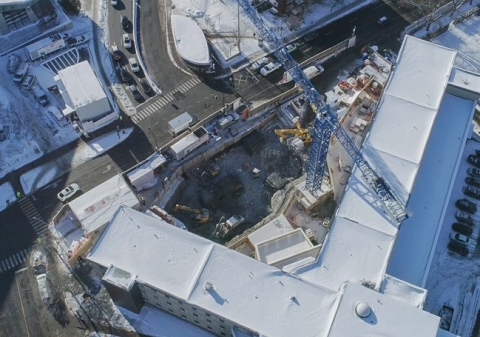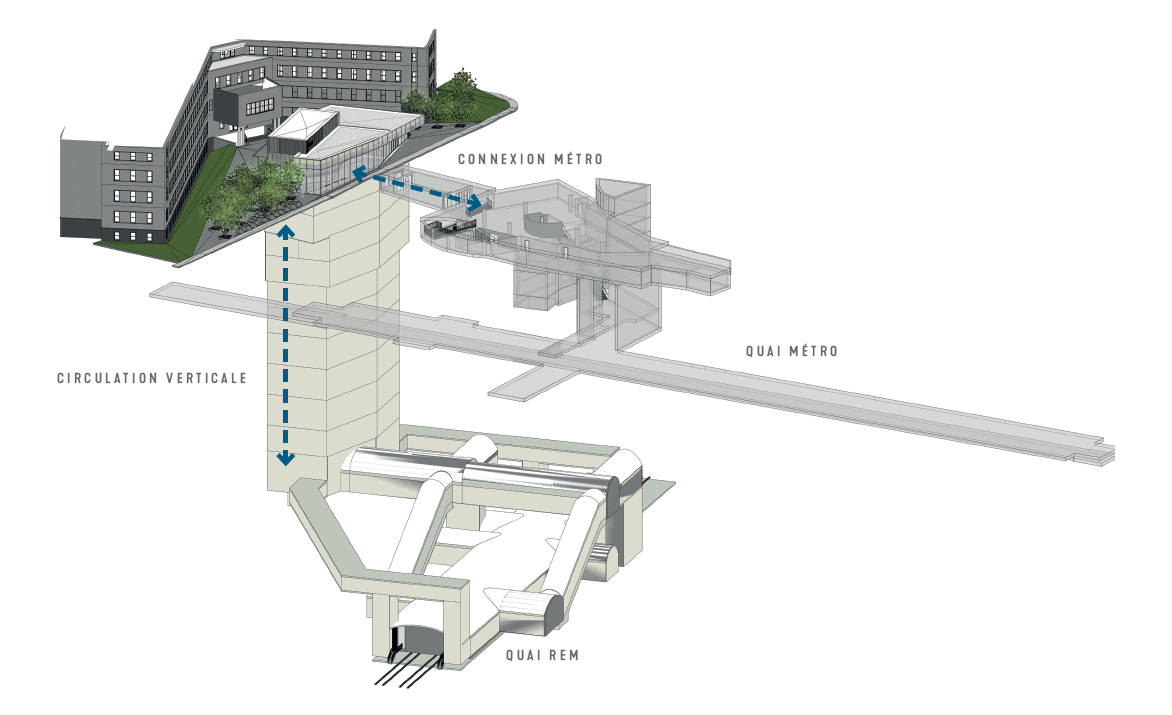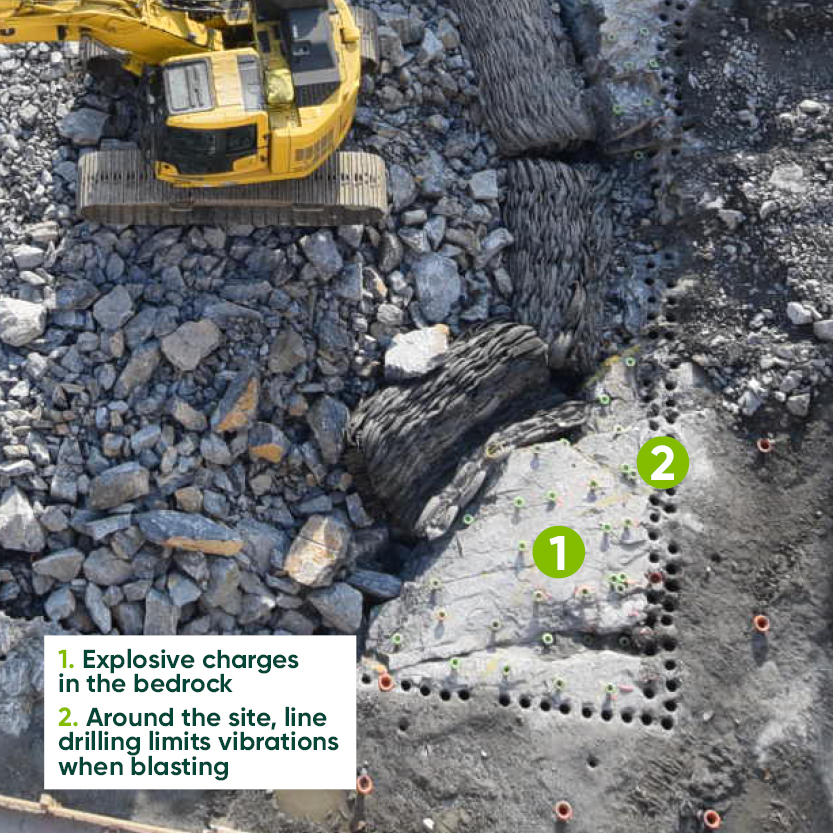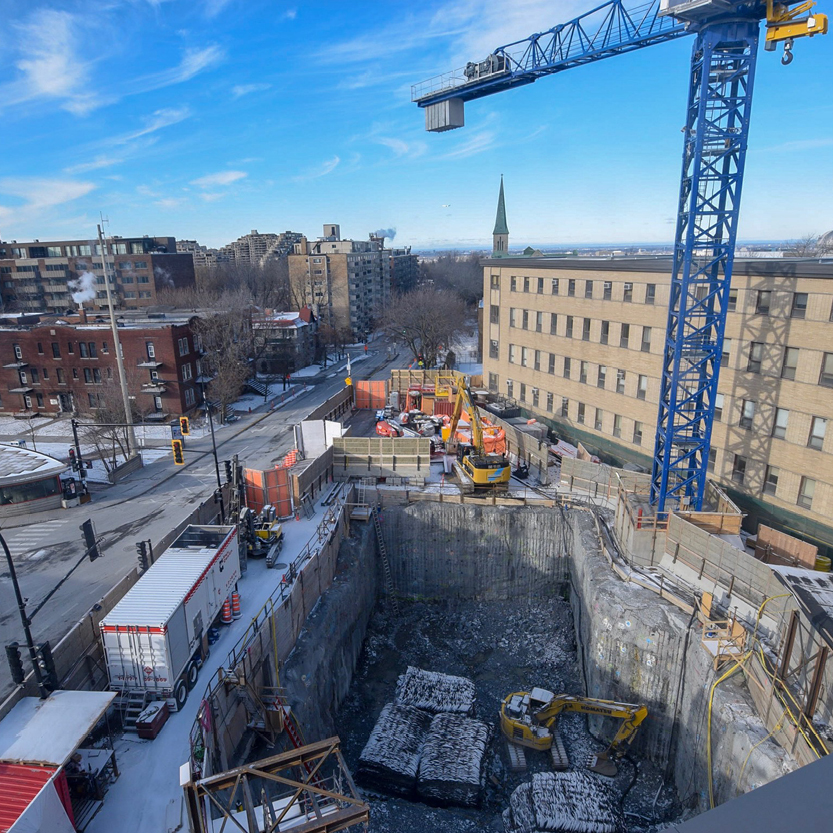
Édouard-Montpetit station: Excavating 20 storeys underground
After some preparatory work, the teams began the excavation of the Édouard-Montpetit station for real in October 2018. Here is how the work is progressing as well as a behind-the-scenes look at this surgical operation where every detail is controlled.
The mission: to dig down to the metro’s blue line (12 metres) then to the tunnel under Mount-Royal (70 metres), where the REM’s underground station will be located.
 Preliminary plan of the REM's Édouard-Montpetit station
Preliminary plan of the REM's Édouard-Montpetit station
This colossal work site is one of the REM’s major construction challenges, not only because of the depth—the equivalent of a 20-storey building—but also because the bedrock in this densely built sector is very hard.
Controlled blasting was the excavation method chosen, given the hardness of the bedrock. This technique involves the use small explosives to gradually break up the various bedrock layers. It’s truly a surgical intervention where everything is controlled. The rock cuttings are then collected with a crane and evacuated by trucks.
 Excavation using controlled blasting 101
Excavation using controlled blasting 101
Internationally mobilized expertise
Due to the nature of the work, we hired the best experts to define all the drilling and blasting parameters and methods.
Pierre Groleau, mining engineer and explosives expert for NouvLR, is one of them. He has 36 years of experience and has widely recognized cutting-edge expertise in controlled blasting. “I’ve had the opportunity to work in different countries, on construction sites in urban environments as well as on large-scale mega surface, underground and underwater projects.”
For him, the challenge and complexity of the Édouard-Montpetit site is based on the proximity of homes, schools and utilities (e.g. piping or electric networks). “This type of activity must take these important considerations into account to manage vibrations and rock projections during controlled blasting.”
 In January 2019, the teams have reached a depth of 11 meters
In January 2019, the teams have reached a depth of 11 meters
Some 20 seismographs
Rigorous measures are therefore deployed at all times to ensure the safety of workers, the public and infrastructure. “We are doing soil characterization, rigorous planning, line drilling and compartmentalized blasting in order to reduce the vibrations felt during blasting,” explained Pierre Groleau. “Throughout the work, some 20 seismographs around the site monitor the effect of each blast in real time.”
“To control the rock projections, each blasting operation is covered with several layers of blasting mats, combined with a dual layer of geotextile membrane.”
Here's an example of controlled blasting. At detonation, blasting mats block the projection of stones:
To strengthen these measures and limit potential impacts, the best blasting products available on the market are required and used, such as high-precision electronic detonators. The latter also enable checking of the ignition sequence so as to identify, locate and correct any mistakes before proceeding with each small blast.
Altogether, this operation will be repeated until fall 2019 to excavate the main shaft. Several months of work will then be required after that to build the underground station for its opening in 2022. But as the work progresses, the action will take place mainly underground, and the surface work will be only the tip of a highly complex iceberg.
The Édouard-Montpetit station will then become the second-deepest station in North America (70 m), after Washington Park in Portland (79 m).
![]()
Travel times from the REM’s future Édouard-Montpetit station
- McGill (green line): 3 min.
- Bonaventure-Gare Centrale (orange line): 4 min.
- Station A40 (Mascouche line): 6 min.
- Montréal-Trudeau Airport: 16 min.
- Dix-30: 17 min.
- Kirkland: 26 min.
- Deux-Montagnes: 29 min.